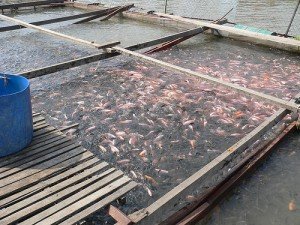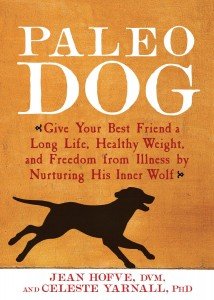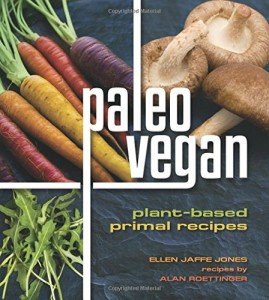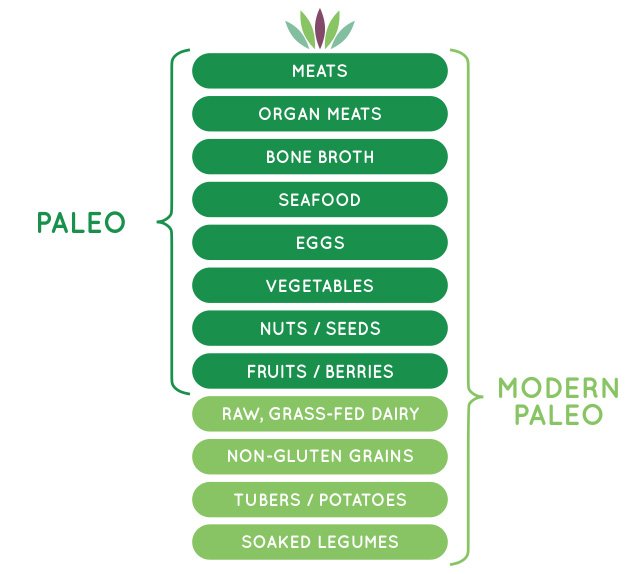Monthly Archives: March 2015
Tilapia Nutrition – Is One of America’s Most Popular Fish Toxic?
Tilapia has experienced a significant increase in popularity. It can be found in almost any retail grocery store and is often a featured item on many restaurant menus. But have you ever wondered what you are really eating? I did. Having grown up around both fresh and salt water fisheries, no one ever talked about tilapia. The reason is that this is not a native fish to the United States. This should create your first suspicion about this species of fish.
Where Does Tilapia Really Come From?
As tilapia is not native to the United States, we have to ask, were does tilapia come from. Tilapia is a tropical fish that originated out of Africa with a relatively short growth time. They live in fresh water environments and are not found in saltwater. So at this point, the questions should begin to stir in your mind as to what is the tilapia that is so often found in the grocery store and being served.
Most of the tilapia in the United States actually comes from China and Indonesia. This fish is farmed and then shipped to the United States. At this point, I feel that it is important to understand what farmed fish means. In a nutshell, you are rapidly growing fish in an artificial environment by feeding them “food stuff” that they would not have exposure to in the wild. These environments to not lend themselves to a vast amount of space to swim in, but rather the fish are densely packed in the man-made environment and routinely exposed to high amounts of ammonia and waste.
One big concern with the source of these fish is that according to a report from the USDA in 2009, China fails miserably with food safety standards, including those that are exported to the US. It appears from the findings of this study that many of the fisheries are located next to heavily polluted areas. Such toxins include environmental pollutants, agricultural residues, feces and veterinarian drug residues. It should be no surprise that if the fish are exposed to these toxins, then those that consume the fish are also going to be ingesting these toxins. What is also interesting is that tilapia fisheries exist in the United States but do not meet the demand, thus encouraging import from foreign markets.
Tilapia Nutrition is Questionable
One of the reasons that many individuals turn to fish in their diet is the consumption of omega 3’s. Omega 3’s have been shown to be effective at supporting conditions including cardiovascular disease, arthritis, autoimmune conditions and cancer just to name a few chronic conditions. However, farmed tilapia is higher in omega 6’s, which are inflammatory and have the opposite effect on our health. The unnatural diet that the fish are fed creates a low omega 3 content and a high omega 6, whereas the fish in its natural environment has just the opposite profile. (Int J Food Sci Nutr. 2009;60 Suppl 5:203-11.) From this we can see that the food provided to these fish makes a significant difference in their nutritional value, leaving us to ask what else we should question regarding tilapia nutrition.
Well, since you asked, the fatty acid ratio is not the only problem with tilapia nutrition. The concern of genetic modification rears its ugly head again. In this case it is not referred to as genetic modification, but rather transgenic. Transgenic tilapia has had genes added to their DNA for a desired outcome. In this case, it resulted in “successful production of transgenic tilapia by injection of transgenes (mouse metallothionein promoter/rat growth hormone gene). (Aquaculture. Volume 105, Issues 3–4, 1 August 1992, Pages 219–232) So rat genes to enhance growth hormone production were added to tilapia DNA. No doubt this is to enhance the rate at which the fish can produce. The bigger concern is that by eating genetically modified, or transgenic, tilapia, you are consuming something that is not in natural state and thus has the potential to increase the activity of the immune system in a negative manner. As we have seen with other GMO (genetically modified organism) debacles, this usually comes at a price.
What You Can Do
If you have been eating tilapia, starting off with a good detox would be recommended. Since these fish are mostly coming from polluted foreign sources, you have likely accumulated some of these toxins. You can begin the detox process by eliminating all of the refined, non-organic sources of food from your diet. You will want to transition to foods that are colorful and nutrient dense along with consuming adequate amounts of protein to support your inherent detoxification pathways.
If you are consuming fish to increase the amount of omega 3 fatty acids in your diet, a safer option than eating farmed raised tilapia is taking omega 3 rich supplements. You could eat the fish itself, but this is not an option in the United States, leaving supplementation as preferred source. The other option that you have is to consume wild caught fish. Wild fish such as salmon, cod and halibut are better options and do not come with the same risks of altered fatty acid composition as farmed fish. Therefore, the nutrition of any of these fish is going to exceed tilapia nutrition.
Paleo Dog Nutrition . . . Not Exactly the Same as Humans
I am a big fan of dogs. I enjoy spending time with my two mutts (said with the utmost endearment) and watching them interact with their world with instinct as opposed to logically as we as humans do. Having said that, it probably comes as no surprise that I want my animals to eat as close to the way they would have in nature as possible. Of recent, I have been on a recent pursuit of finding the right things for dogs to eat. Sure there are some reasonable foods out there that have been prepared, but this is just not the same as the way our animals would eat if they were in the wild.
Is the State of Pet Healthcare Really that Different than Human?
A trip to an emergency vet will get you thinking. No one wants to go to an emergency visit, but unfortunately it happens sometimes. On a recent visit with my female mix, one thing became very clear to me; there are some striking similarities between the healthcare that humans get and that delivered to our furry friends. God bless the vet who was on staff the night my dog started having an unexplained anaphylactic (allergic) reaction. I still to this day am not certain what initiated it, I just know that the vet was great at her job and helped me get control over the immediate inflammation that had occurred. However, for as good of a job as this vet did, my dog still suffers from subtle, not severe skin itching. To help, I tried seemingly numerous options, both conventional and alternative. If the treatment was reasonable and did not impose harm, we tried it. This allergen free food, that round of allergy shots, this supplement cocktail, etc. Nothing seemed to make a significant difference expect going to pure, raw food.
The Frustration of a Pet Store
Having narrowed down the list of reasons that may have triggered my dog’s immune reaction, I decided to spend some time in the dog food aisle attempting to find the cleanest food I could find. What I found instead was disappointment that turned to anger. The dog food industry is as crooked as the human food industry. Maybe even more so since domesticated animals are mostly defenseless. The ingredients I found should never be consumed by a dog and they would not be except for the fact that they have been enhanced with flavors. Since dogs use their noses extensively, stimulating that region in the brain with smells tells them to eat.
The ingredients I found include, but were not limited to, grains, canola oil and alfalfa, just to name a few. The problem with grains is just as severe in dogs as it is in humans. None of the canola showed that it was from a non-GMO source and since the alfalfa was not defined as organic on any label, one has to assume that it is not. This means that it was sprayed with Roundup, most of which stays in the plant at the time of harvesting and is then ingested by dogs. In a nutshell, it is slowly poisoning an animal. What else is wrong? I was not able to find the source of any of the meats. Not one bag actually listed the meat source. It would state the type of meat; chicken, fish, beef, but not the origin of it. I could continue, but I won’t. So this does not leave many options for food choices.
What Paleo Dog Nutrition Should Look Like
A study of our canine friends will teach us that they are not completely carnivores, although mostly. They do have an herbivore side to them as well. Therefore, Paleo dog nutrition is mostly a protein, or meat, based diet. I have enjoyed turning my dogs loose in the woods only to watch them come back having taken and dined on some small quarry that they caught. It is a natural instinct for them. However, it also amuses me when we are walking that they will like the grasses and start nipping at them. They also seem to rather enjoy a few fresh vegetables as well.
With more meat based options becoming available such as raw patties, it is becoming easier to support the health of our canine friends. I like to make their food or use the patties and supplement with safe vegetables and fruits. Here are just a few that I have found to be safe from researching.
Fruits: apples, apricots, bananas, blueberries, cantaloupe, mango, orange, pear, pineapple, raspberries, strawberries and watermelons
Vegetables: asparagus, bell pepper, carrots, celery, cucumber, green beans, pumpkin, spinach, sweet potato
Stopping the Cause of Pet Diseases
Just like humans, chronic pet diseases are on the rise. Who would have thought that diabetes and hypothyroidism would be things that we would be talking about in the canine population? What almost seems crazy, but it is now a reality. As the food of humans has continued to stray further from the original sources and methods of gathering, so too has the increase in human diseases, especially those related to immune dysfunction. Therefore, it is no surprise that the shift in the diet of dogs may equally be responsible for the shift towards increased diseases. Maybe the time has come to consider Paleo dog nutrition as an initial approach to the well-being of our animals.
Please note, by writing this I make no claims of being an animal nutrition expert. However, I am observant and an informed pet owner.
The Stressful Pursuit of the Correct Meal Plan
With literally hundreds of meal plan variations from which to choose, it is no wonder people can become stressed and frustrated. Which one is best and why? Some experts seem to promote the “correct” plan for everyone. If the experts disagree, who is right? With that said, let’s look at some general principles regarding nutrition. Once we grasp these principles, we can do a better job of selecting the proper plan.
Principle #1 – Protein is a Mainstay
Principle #1 – Protein is responsible for a great many bodily processes. One of the primary roles is to act as a structural component of cells and tissues. Without enough protein, the cells and tissues would not function properly. Proteins, by the way, are large, complex molecules made up of smaller amino acid compounds. Some amino acids are made by the body; others (essential) are not. You must get the essential amino acids from your diet. Protein also provides a small amount of energy in absence of carbohydrates and fat. Therefore, consuming high quality, clean (organic, grass fed, free range) protein is extremely important. The idea is consume enough protein to support your system. This depends on your age, activity level, genetics, metabolism, and overall muscular structure.
Principle #2 – Know Your Carbs for the Best Meal Plan
Principle #2 – Carbohydrates produce energy and assist in digestion. Most, such as starch and sugar, break down into glucose. Fiber, another carbohydrate, is vital to digestion, but it does not break down into glucose. Carbohydrates can be either simple or complex. Simple carbohydrates are sugars and can be naturally occurring or added to foods. Natural sugars are found in fruit, dairy, vegetables, legumes, and other whole foods. Added sugars, such as sucrose and dextrose, are packed into processed food, which are usually low in nutrients and high in calories. Generally, we consume far too many carbohydrates in the Standard American Diet (SAD). The principle here is to consume enough carbohydrates, but not too many.
Principle #3 – Fat Does NOT Make You Fat
Principle #3 – We need to eat a reasonable amount of fat to stay healthy. There are two main categories of fatty acids – saturated and unsaturated. Both can be beneficial. However it is wise to limit saturated fats (do not eat more of them than you do unsaturated). Fats help the body maintain its core temperature, absorb nutrients (vitamins A, D, E, K), and provide energy. Additionally, fats are extremely helpful for our cells, brain, hormones, hair, and skin. The dangerous thing with fat is really not so much the eating of fat but the storage of fat. Our bodies suffer greatly because of excess fat accumulation around the organs and waistlines.
With a workable understanding of the three principles, we can better decide what works best for us regarding meal plans. That’s right…I said “works best for us.” There is no once size fits all program that will work the same for everybody. Each of us is different and has different requirements. I will say, however, a Paleo plan or slight variation seems to fit MOST quite nicely.
So where do we begin in selection of a plan for us?
One key to remember is this: Limit carbohydrates to between 50-150 grams daily. This is the “sweet spot” and can be a great place to start. Begin somewhere in the middle and adjust up or down depending on your need. If your body fat is already in an acceptable range, you may be able to consume a little more. If you body fat is out of range on the high side, you will want to really focus on using fat as your primary source of fuel. As an extreme in a high body fat condition, a practitioner may utilize a ketogenic nutrition plan, which forces the body to utilize fat as its main fuel source. This in turn, can substantially lower body fat. I caution you to obtain a practitioner’s supervision with this to avoid excessive muscle wasting.
It can be quite confusing I must admit. Start with a Paleo plan or slight variation and go from there. Many Paleo type plans focus on higher amounts of quality protein and fats and lower calories from carbohydrates. Utilize the glycemic index when selecting carbohydrates and eat at least 80% of them from the low glycemic variety with the remaining 20% coming from the moderate glycemic category. Limit high glycemic carbohydrates.
This should assist you greatly in your selection. Here’s to living the wellness life together!
Learn more from Mark Sherwood at Live4E.
What is the Paleo Diet, Back Then vs. Now
Simply put, paleo diet is the consumption of food without preservatives and grains. It’s an effort to encourage similar to the diet our stone-age ancestors used to have. The food our ancestors consumed consisted of anything they could hunt and gather – leafy greens, nuts, meats, fishes, seeds, and regional veggies.
What is the Paleo Diet?
Processed food items have become a part of our regular diet and is a type of food that our bodies haven’t evolved to digest properly; foods such as rice, pasta, and bread. Thus, instead of these, we should eat foods that our bodies can digest easily; mostly those food items that occur and are available naturally.
To answer the question, “what is the paleo diet”; it is a big advocate of protein from natural sources – meat, eggs, and seafood. Vegetables and fresh fruits are even more highly encouraged. This gives paleo diet a crossover with veganism, making it a diet rich in both, protein and fiber content, the source of which are vegetables and not grains. You could even call it Paleo-vegan, the perfect combination of mostly plant based foods with the addition of protein and fat as needed.
Our genetics haven’t changed from older times
Tens of thousands of years ago, our stone-age ancestors survived and thrived as hunters and gatherers. Despite a millennia passing since then, our genetics haven’t changed all that much. An average human back then, used to be quite tall, very muscular, extremely agile, and athletic. On the other hand, an average human being now, is out of shape, obese, unhappy, stressed, and losing the battle against a horde of preventable diseases.
What happened?
Agriculture is what happened! Couple of thousand years ago, farming was discovered and soon after that, the agricultural revolution was set forth in full swing. Our species evolved from hunters and gatherers to being farmers. Tribes settled down and formed societies, progress took the fast track, and this is where we humans are today with the advent of industrialization making things even worse.
The underlying issue is that our bodies never really adjusted to the amount of grains we are now farming and consuming. From the beginning of our species to where we are today, 99.5% of the time we have spent on earth has been as hunters and gatherers. Considering this data, notice the significant amount of time our bodies have had to adapt to that lifestyle, with only 0.5% of the time spent as farmers with our diet pattern being abruptly shifted. Just imagine what we are putting our bodies through.
Rather than consuming meat, veggies, and fruits, we have become dependent on grains – rice, bread, corn, pasta, and so on. Moreover, our government recommends 6-11 servings per day, and you can witness for yourself how more and more people are succumbing to obesity.
Something definitely isn’t right; paleo diet is not an effort to go back in time, but a way to restore the natural process of our body; the way it was biologically designed to function. This will allow us to begin living a healthier life instantly.
Fortunately, now that you know what is the paleo diet all about; instead of going on a paleo diet completely, you can simply restrict the foods that aren’t included in the paleo diet. As a result, you may very well be able to stop counting calories forever. Other than stopping you from worrying about calories, this particular diet enables you to eat until you’re full. Additionally, it aids your body in building muscle and losing weight, and gets you in shape way faster than any other diet.
In conclusion, what is the paleo diet, really? It’s a step in the direction human beings were supposed to take well before agricultural revolution, without the presence of preservatives, chemicals, and modified grain content in our foods. Paleo Diet would not only would help in preventing obesity but protect you from all the modern diseases that are the direct result of unhealthy diet patterns that we have formed ever since the agricultural revolution.
What is the Paleo Diet in Modern Times?
Nowadays most nutritionists and health authorities believe and promote how healthy cereal grains are for diseases of all civilizations. The information these bodies are basing their claims on is a product of medical studies that cannot establish the cause and effect. These studies are showing an association that is inverse between western diseases and consuming cereal grains, which aren’t demonstrated via controlled randomized trials.
When one asks, what is the paleo diet, they must first ask what it is not. The standard American diet that Americans consume is not a paleo diet. In fact, this diet is the culprit behind the plethora of chronic health issues that seem to emerge out of nowhere, from diabetes to cardiovascular disease, to even subtly contributing to the growth of cancer cells and tumor tissues. Our diet nowadays consists mainly of genetically modified processed foods, which disturbs multiple mechanisms of our body. The possibility of long-term health with these foods in our daily diet is practically nonexistent. They are certainly not paleo foods.
When shopping at the super market, you can easily identify these types of food. They will usually come in ready to serve containers, laden with preservative and chemicals that an average shopper can’t even pronounce. Just picture how serious the situation has become; more than half the foods we consume are processed and more than half the planet is surviving on them. The increase of diet related illnesses is a clear indicator that something has to change in how we produce the food and how we decide to eat it. Processed food gives birth to food allergies, diseases that are difficult to diagnose let alone treat, and creates more issues for the consumers than solving them. The Paleo diet is a decision one chooses to make on a personal level and implement in their lives.
Consume only organic and pastured meats
We indeed are what we choose to eat, and since we have a choice, you would want to select pastured meat in this modern day and age. Yes, pastured meat may cost a bit more; consider it an investment in not only the environment but also the wellbeing of your body.
What is the Paleo diet and how it prevents food allergies nowadays?
Paleo diet is now more important than ever before, because according to the Food Allergy Research & Education, about 15 million people in America are suffering from numerous food allergies, that includes children more accurately 1 in 13 of them. It rose from by 18% among children over the course of 10 years between 1997 and 2007.
In addition, a paleo diet contains a great amount of fiber rich vegetables. Fiber greatly aids in the function of the gut; in the gastrointestinal tract vegetable fiber ferments, creating fatty acids that promote healthy gut bacteria, and prevents the growth of antagonistic strains of bacteria. What is the paleo diet? It prevents in the development of new allergens.
What is the Paleo Diet in this Modern Day and Age?
Paleo diets have proved to be a remarkable change for quite a lot of individuals. The types of food that are a part of this particular diet make it suitable for everyone, no matter which part of the world you belong to.
Over the last 20 years, human beings are requiring less and less physical activity to get through the day, and consuming processed food on top of such a lifestyle can prove to be dangerous to your health. The consumption of processed foods accumulates harmful fats and problematic toxins in our body. Due to reduced physical movement, these fats and toxins fester into chronic health conditions that are difficult to diagnose until after significant damage has been done.
The Paleo diet can negate the likelihood of obesity and counter all the symptoms that make us lethargic. In addition to that, it will aid in the prevention of numerous chronic health conditions and transform your entire body for the better, while maintaining your body for long-term health.
We are convinced by the media that the world is becoming increasingly health conscious (and that might be true for small percentage of the world’s population), but this is nowhere near to the extent that we’ve been led to believe. Therefore, to not be a victim, could you benefit from the dietary changes now that you know, “What is the Paleo Diet?”







